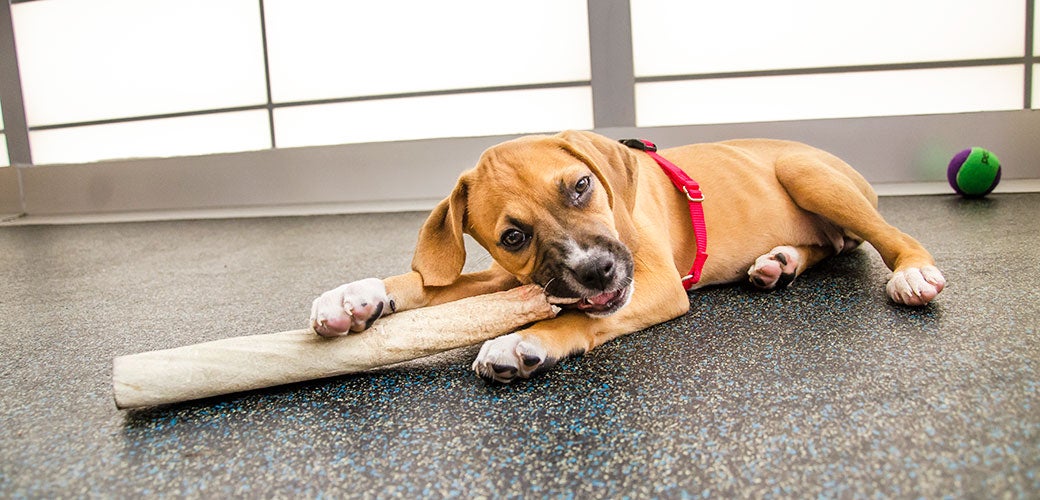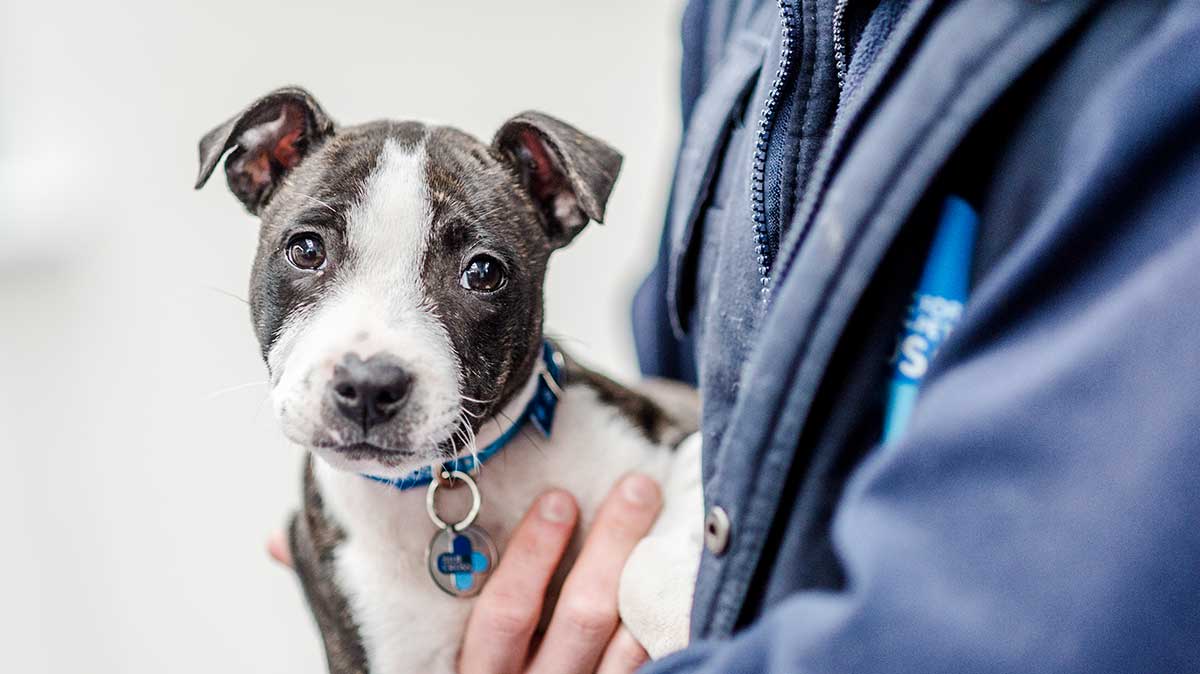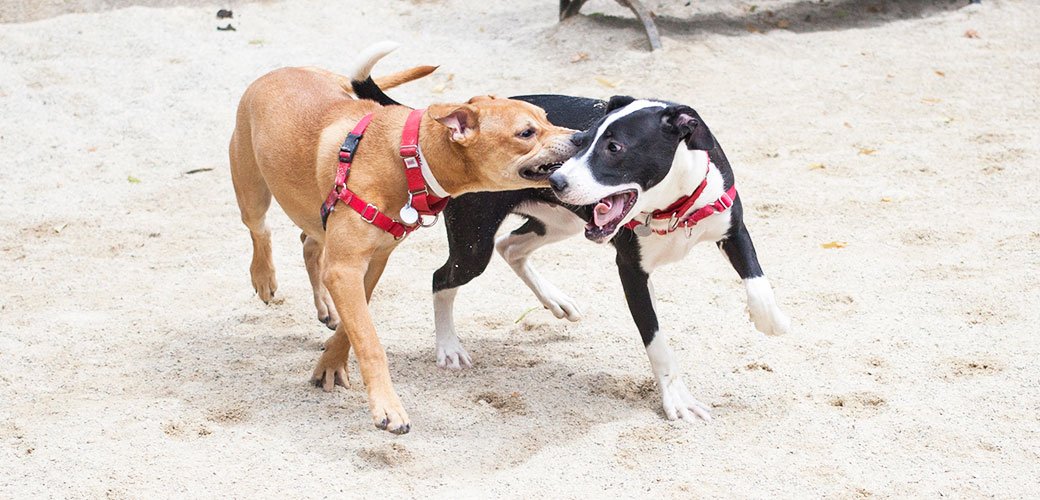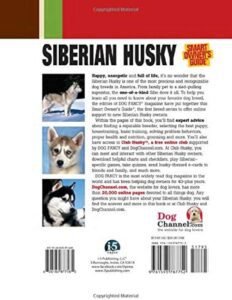Dog biting and mouthing can be addressed by providing appropriate chew toys, withdrawing attention when the dog gets mouthy, avoiding physical or verbal punishment, making a trade, not allowing them to rehearse problem behavior, not teaching the dog to mouth you, providing plenty of exercise, and continuing training appropriate behavior. Nipping is a small and sudden bite from a dog that is not severe enough to break the skin but may cause more pain than mouthing.
Most dogs will grow out of mouthing and play biting when they are around three to five months old, and these behaviors are often a sign that the dog wants attention or wants to play. It’s important to differentiate between normal play mouthing and mouthing that may indicate aggression.
Understanding Dog Biting And Mouthing
Understanding Dog Biting and Mouthing is essential for dog owners to address their pet’s behavior. Learn how to manage mouthing in dogs, provide appropriate chew toys, withdraw attention if they get mouthy, and avoid physical punishment. Training and plenty of exercise are key to redirecting their energy onto positive behaviors.
Difference Between Mouthing, Nipping, And Biting
Mouthing, nipping, and biting are behaviors commonly exhibited by dogs, but they differ in severity and intention. Understanding the difference is crucial for dog owners to address these behaviors effectively. Mouthing is when a dog gently uses its mouth to communicate or explore its surroundings. It is often seen in puppies as they learn about the world around them. Unlike nipping and biting, mouthing does not involve breaking the skin or causing pain. Nipping, on the other hand, involves a small and sudden bite from a dog. While it may cause more pain than mouthing, it is not severe enough to break the skin. Nipping is usually a sign that the dog wants attention and is not considered aggressive behavior. Biting, however, is a more serious behavior where a dog uses its teeth forcefully and intentionally to cause harm. It can result in broken skin, bruises, or even serious injuries. Biting is often a sign of aggression or fear and must be addressed promptly.Reasons For Mouthing And Nipping
Mouthing and nipping are natural behaviors for dogs, especially during their early stages of development. Understanding the reasons behind these behaviors can help dog owners manage and modify them appropriately. One of the main reasons for mouthing and nipping is teething. Puppies go through a teething process, similar to human babies, where their new teeth are growing and causing discomfort. Mouthing and nipping can provide relief to their sore gums. Mouthing and nipping can also be a form of exploration and play. Dogs use their mouths to interact with their environment and learn about objects and people around them. It is their instinctual way of understanding the world. Another reason for mouthing and nipping is attention-seeking behavior. Dogs may engage in these behaviors to get their owner’s attention or to initiate play. It is important to provide alternative outlets for their energy and attention, such as appropriate chew toys or interactive games. Additionally, certain dog breeds, such as herding or working breeds, may be more prone to mouthing and nipping due to their inherent instincts and high energy levels. Understanding the breed-specific traits can help in managing and redirecting these behaviors effectively. It is essential for dog owners to distinguish between normal mouthing/nipping and aggressive biting behavior. Providing proper training, socialization, and positive reinforcement can help puppies grow out of these behaviors as they mature.Age At Which A Dog Stops Mouthing
Mouthing and nipping are common behaviors observed in puppies, but they typically diminish as dogs mature. Most puppies will stop mouthing between three to five months of age as they learn bite inhibition and proper socialization. During the teething process, which usually lasts until around seven months of age, puppies may exhibit increased mouthing behavior. This is a crucial time for owners to provide appropriate chew toys and discourage mouthing on human hands or furniture. Consistency in training, redirecting mouthing behavior onto toys, and discouraging nipping by withdrawing attention or using positive reinforcement techniques can help speed up the process of a dog outgrowing this phase. It is important for dog owners to understand that every dog is unique, and the exact timing of when a dog stops mouthing may vary. Patience, proper guidance, and consistent training are key to ensure that mouthing behavior decreases and ultimately stops as the dog matures.
Credit: www.aspca.org
Dealing With Dog Mouthing And Nipping
Learn how to deal with dog mouthing and nipping without resorting to punishment or aggression. Provide appropriate chew toys, withdraw attention when they get mouthy, and continue training for appropriate behavior. Understand the difference between mouthing, nipping, and biting to address the issue effectively.
Teaching A Dog To Stop Biting And Mouthing
If your furry friend has a habit of biting and mouthing, it’s important to teach them appropriate behavior. Here are some strategies to help you with this challenge: 1. Provide appropriate chew toys: Dogs have a natural instinct to chew, so it’s important to provide them with suitable toys to satisfy this need. Make sure to choose toys that are safe and durable. 2. Withdraw attention if he gets mouthy: When your dog starts to bite or mouth, it’s essential to withdraw your attention immediately. This teaches them that this behavior leads to disengagement and can help discourage it over time. 3. Avoid physical or verbal punishment: Resorting to physical or verbal punishment can cause fear and anxiety in your dog. Instead, focus on positive reinforcement techniques to reward good behavior and redirect their energy onto more appropriate activities. 4. Make a trade: If your dog tends to bite or mouth when they want something, such as a toy or treat, teach them to “trade” by giving them a desired item in exchange for what they are mouthing. This can help redirect their focus and discourage the unwanted behavior. 5. Don’t allow them to rehearse problem behavior: Consistency is key when addressing biting and mouthing. Avoid situations where your dog is likely to engage in this behavior, and instead, provide them with alternative activities to keep them occupied.Deterrence Techniques For Foster Dogs
Foster dogs may have a history of mouthing, nipping, or play biting due to past experiences or lack of training. Here are some techniques to help deter this behavior: 1. Deterring them with a high yip or ouch: When your foster dog starts to mouth or nip, let out a high-pitched yip or say “ouch” firmly. This mimics the behavior of littermates or other dogs and can signal to your dog that their behavior is not acceptable. 2. Ignore your dog: Sometimes, ignoring the behavior can be an effective technique. If your foster dog mouths or nips you, calmly turn away and avoid eye contact. This sends a message that this behavior does not result in attention or engagement. 3. Keep it positive and calm: Create a calm and positive environment for your foster dog. Avoid loud noises, rough play, or chaotic situations, as these can contribute to increased mouthing or nipping behaviors. 4. Arousal mouthiness: Some dogs engage in mouthing or nipping when they are overstimulated or excited. If you notice this pattern with your foster dog, it’s important to provide them with sufficient exercise to release their excess energy and keep them mentally stimulated. 5. Giving your foster dog sufficient exercise: Physical exercise is essential for dogs. Make sure your foster dog gets plenty of walks, playtime, and mental stimulation to help reduce their likelihood of mouthing or nipping behaviors.Managing Mouthing In Dogs
To effectively manage mouthing in dogs, here are some additional strategies you can implement: 1. Continue training appropriate behavior: Consistent training is crucial for teaching your dog what is acceptable behavior. Reinforce good behavior with rewards and redirect them to appropriate activities when they start to mouth or nip. 2. Supervise interactions: If your dog frequently mouths or nips during interactions with people or other animals, it’s important to closely supervise these interactions. Intervene if necessary and provide guidance to redirect their behavior. 3. Provide structured playtime: Incorporate structured playtime into your dog’s routine, where they can engage in appropriate play behaviors. This can help channel their energy into more acceptable activities. 4. Implement bite inhibition training: Teaching your dog bite inhibition can be helpful in preventing them from causing harm when mouthing. Gradually reduce the pressure of their bites during play, and reward them for gentle behaviors. 5. Consult a professional: If your dog’s mouthing behavior persists or becomes more concerning, it may be beneficial to seek guidance from a professional dog trainer or behaviorist. They can provide personalized advice and help address any underlying issues. Remember, addressing mouthing and nipping requires patience, consistency, and positive reinforcement. By implementing these strategies, you can help your dog develop appropriate behaviors and strengthen the bond between you.Tips To Stop Dog Mouthing
Discover effective tips to stop dog mouthing and biting. Provide appropriate chew toys, withdraw attention when they get mouthy, avoid punishment, make trades, and ensure plenty of exercise. Teach your furry friend proper behavior and prevent them from rehearsing problem behaviors.
Tips To Stop Dog Mouthing:
Dog mouthing can be a common behavior issue that many pet owners face. It is important to address this behavior early on to prevent it from becoming a habit or escalating into more serious biting. Here are some effective tips to stop dog mouthing:
Provide Appropriate Chew Toys:
One of the main reasons dogs mouth is because they need an outlet for their chewing instincts. By providing appropriate chew toys, you can redirect your dog’s mouthing behavior onto something more productive. Make sure the toys are safe and durable to withstand your dog’s chewing.
Withdraw Attention If Dog Gets Mouthy:
When your dog starts to mouth or bite, it’s essential to teach them that this behavior is not acceptable. One effective way to do this is by withdrawing attention whenever your dog gets mouthy. Turn away, cross your arms, and ignore them until they calm down. This teaches them that gentle behavior will receive attention, while mouthing leads to disconnection.
Avoid Physical Or Verbal Punishment:
Physical or verbal punishment can have negative effects on your dog’s behavior and their trust in you. It may increase fear or aggression, which could escalate the mouthing behavior. Instead, focus on positive reinforcement and reward your dog for good behavior. Use treats, praise, and petting to encourage them to choose more appropriate behaviors.
Make A Trade:
If your dog is mouthing your hand or an item they shouldn’t, rather than scolding or forcibly taking it away, try making a trade. Offer them a high-value treat or toy in exchange for what they have. This reinforces positive behavior and helps them understand that they will receive something even better by letting go of inappropriate objects.
Don’t Allow Them To Rehearse Problem Behavior:
Consistency is key when it comes to teaching your dog acceptable behavior. If you allow them to mouth or bite without consequence, they may continue to do so because they find it rewarding. By consistently redirecting their focus onto appropriate chew toys or other activities, you can help them break the habit of mouthing.
Don’t Teach Your Dog To Mouth You:
It’s important not to inadvertently encourage mouthing behavior by allowing your dog to mouth your hands or other body parts during play. Instead, teach them suitable alternatives, such as fetch or tug-of-war with designated toys. By redirecting their natural mouthing instincts onto appropriate objects, you can help them understand what is acceptable behavior.
Provide Plenty Of Exercise:
A tired dog is often a well-behaved dog. Make sure your dog is getting enough physical and mental stimulation through regular exercise. This can help burn off excess energy and reduce their urge to mouth or bite out of boredom or frustration.
Continue Training Appropriate Behavior:
Consistent training is crucial to help your dog understand what is expected of them. Use positive reinforcement techniques to reinforce desirable behaviors and redirect unwanted mouthing. Training sessions should be short, frequent, and rewarding to keep your dog engaged and motivated to learn.
Understanding The Behavior Of Dog Mouthing
When it comes to dogs, mouthing is a natural behavior that is a part of their instinctive communication and play. However, it is important for pet owners to understand this behavior in order to address any concerns and ensure a safe and comfortable environment for both the dog and its human companions.
Reasons Why Dogs Mouth
Dogs may engage in mouthing for various reasons:
- Exploration: Dogs use their mouths to explore the world around them, just like humans use their hands. It is their way of discovering new textures, objects, and even smells.
- Attention-seeking: Mouthing can also be a way for dogs to seek attention from their owners. By mouthing, they are seeking interaction and play.
- Teething: Puppies, in particular, may mouth more often as it helps alleviate the discomfort of teething. It provides them with relief and helps their new teeth emerge.
Normal Vs. Aggressive Mouthing
It is important to differentiate between normal mouthing behavior and aggressive mouthing. Normal mouthing is typically gentle and includes soft bites, licking, or nibbling. It is usually done in a playful manner and does not cause harm.
On the other hand, aggressive mouthing involves hard bites, growling, and a tense body posture. It is accompanied by signs of aggression, such as raised hackles or a rigid stance. Aggressive mouthing should be addressed immediately and may require professional intervention to ensure the safety of everyone involved.
Impact Of Excitement On Mouthing Behavior
Excitement can have a significant impact on a dog’s mouthing behavior. When dogs become overly excited, they may resort to mouthing as a way to release their energy. This can result in increased intensity and forcefulness in their mouthing, which may become uncomfortable or even painful for humans.
To manage excitement-related mouthing, it is important to redirect the dog’s energy onto appropriate toys or activities. By providing them with alternative outlets for their excitement, such as puzzles, chew toys, or interactive games, you can help them channel their energy in a more acceptable manner.
Additionally, rewarding good behavior and ignoring or withdrawing attention when mouthing occurs can also help deter the behavior. Consistency and positive reinforcement are key in training dogs to control their mouthing tendencies.
Mouthing In Puppies
Mouthing in puppies is a common phase that most pups go through, but it’s important to teach them not to bite or mouth excessively. Providing appropriate chew toys, redirecting their energy onto toys, and rewarding good behavior can help manage and discourage biting and mouthing in dogs.
Normal Behavior For Puppies
Mouthing is a normal behavior for puppies, especially during their teething phase, which typically occurs between three to five months of age. It is important to understand that this behavior is not aggression but rather a way for puppies to explore their environment and interact with their owners. Puppies use their mouths to play, chew, and communicate, much like young children do with their hands. However, it is essential to teach puppies appropriate ways to interact with humans to prevent any accidental harm.
Preventing Mouthing Habits In Adult Dogs
It is important to address mouthing habits in puppies to prevent these behaviors from persisting into adulthood. By providing appropriate chew toys and redirecting their energy onto these toys, puppies can learn to chew on acceptable items rather than using their mouths on human skin or belongings. Additionally, it is crucial to withdraw attention if a puppy gets mouthy, as this teaches them that gentle behavior is rewarded with attention while mouthing results in a loss of interaction.
Avoiding physical or verbal punishment is essential when addressing mouthing in puppies. Punishment can lead to fear and anxiety, which may worsen the behavior or cause other behavioral problems. Instead, focus on positive reinforcement by rewarding good behavior with treats or praise. This helps puppies associate appropriate behavior with positive outcomes, encouraging them to repeat the desired actions.
Training Techniques To Stop Dog Mouthing
To stop dog mouthing, it is important to employ training techniques that discourage this behavior. One effective technique is making a trade, offering a toy or treat in exchange for mouthing behavior. This helps redirect their focus onto an appropriate item and reinforces that mouthing humans is not acceptable.
Moreover, it is crucial not to inadvertently teach puppies to mouth by allowing them to play bite during play sessions. Instead, provide plenty of exercise to help release their energy and engage in training sessions that reinforce appropriate behaviors, such as sitting or fetching. Consistent training and positive reinforcement can help puppies learn proper boundaries and behaviors, reducing mouthing habits as they grow into adult dogs.

Credit: www.dallasdog.org

Credit: www.bluecross.org.uk
Frequently Asked Questions On Dog Biting And Mouthing
How Do I Get My Dog To Stop Biting And Mouthing?
To stop your dog from biting and mouthing: 1. Provide appropriate chew toys. 2. Withdraw attention if he gets mouthy. 3. Avoid physical or verbal punishment. 4. Make a trade. 5. Don’t allow them to rehearse problem behavior. Remember to provide plenty of exercise and continue training appropriate behavior.
What Is The Difference Between Mouthing Nipping And Biting In Dogs?
Nipping is a sudden bite that causes more pain than mouthing but doesn’t break the skin. Nipping is not aggressive and usually a sign of wanting attention. Mouthing is gentle biting without breaking the skin. Biting is more severe and aggressive, causing injury.
At What Age Should A Dog Stop Mouthing?
Dogs typically stop mouthing when they are around three to five months old. Mouthing is a common phase for puppies and is part of their natural teething process. During this time, it is important to provide appropriate chew toys, avoid physical or verbal punishment, and continue training appropriate behavior.
What Does It Mean When A Dog Keeps Mouthing?
When a dog keeps mouthing, it usually means they are trying to communicate or play with you. It’s a normal behavior, but it can be managed by providing appropriate chew toys, redirecting their energy onto toys, and rewarding good behavior.
Avoid physical or verbal punishment and make sure to give your dog plenty of exercise.
Conclusion
To effectively manage dog biting and mouthing, it is essential to provide appropriate chew toys, withdraw attention when they get mouthy, and avoid physical or verbal punishment. Making a trade, not allowing them to rehearse problem behavior, and providing plenty of exercise are also crucial.
It’s important to distinguish between nipping, mouthing, and biting, as nipping is often a sign of seeking attention. Consistency in training and understanding your dog’s behavior will lead to a well-behaved and happy furry friend.







